 W
WThe 13th Spy is the eighth novel in the Killmaster series.
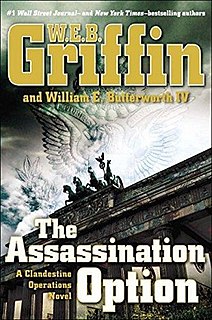 W
WThe Assassination Option is the second novel in the Clandestine Operations Series by W.E.B. Griffin and William E. Butterworth IV.
 W
WAtomsk, first published in 1949, is a Cold War spy novel by "Carmichael Smith", one of several pseudonyms used by Paul Linebarger, who wrote fiction most prolifically as Cordwainer Smith. Written two years after Winston Churchill's Sinews of Peace address, Atomsk is the first espionage novel of the Cold War, inaugurating a genre exemplified by writers such as Ian Fleming and John Le Carré.
 W
WBillion-Dollar Brain is a 1966 Cold War spy novel by Len Deighton. It was the fourth to feature an unnamed secret agent working for the British WOOC(P) intelligence agency. It follows The IPCRESS File (1962), Horse Under Water (1963), and Funeral in Berlin (1964). As in most of the author's novels, the plot of Billion Dollar Brain (1967) is intricate, with many dead ends.
 W
WThe Cardinal of the Kremlin is an espionage thriller novel, written by Tom Clancy and released on May 20, 1988. A direct sequel to The Hunt for Red October (1984), it features CIA analyst Jack Ryan as he extracts CARDINAL, the agency's highest placed agent in the Soviet government who is being pursued by the KGB, as well as the Soviet intelligence agency's director. The novel also features the Strategic Defense Initiative (SDI), a real-life missile-defense system developed by the United States during that time, and its Russian counterpart. The book debuted at number one on the New York Times bestseller list.
 W
WThe Charm School is a 1988 spy thriller novel by American author Nelson DeMille, set in the Soviet Union.
 W
WThe Clocks is a work of detective fiction by British writer Agatha Christie, first published in the UK by the Collins Crime Club on 7 November 1963 and in the US by Dodd, Mead and Company the following year. It features the Belgian detective Hercule Poirot. The UK edition retailed at sixteen shillings (16/-) and the US edition at $4.50.
 W
WDeath at Nuremberg is the fourth novel in the Clandestine Operations Series by W.E.B. Griffin and William E. Butterworth IV.
 W
WDeclare (2000) is a supernatural spy novel by American author Tim Powers. The novel presents a secret history of the Cold War, and earned several major fantasy fiction awards.
 W
WDevil May Care is a James Bond continuation novel written by Sebastian Faulks. It was published in the UK by Penguin Books on 28 May 2008, the 100th anniversary of the birth of Ian Fleming, the creator of Bond. The story centres on Bond's investigation into Dr Julius Gorner, a megalomaniac chemist with a deep-seated hatred of England.
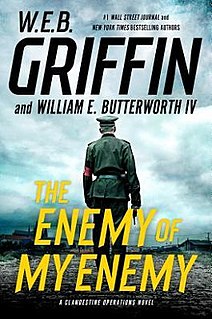 W
WThe Enemy of My Enemy is the fifth novel in the Clandestine Operations Series by W.E.B. Griffin and William E. Butterworth IV.
 W
WForever and a Day is a 2018 James Bond novel written by Anthony Horowitz, and commissioned by the estate of Bond's creator, Ian Fleming. It was published on 31 May 2018.
 W
WFrom Russia, with Love is the fifth novel by the English author Ian Fleming to feature his fictional British Secret Service agent James Bond. Fleming wrote the story in early 1956 at his Goldeneye estate in Jamaica; at the time he thought it might be his final Bond book. The novel was first published in the United Kingdom by Jonathan Cape on 8 April 1957.
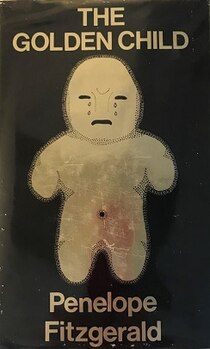 W
WThe Golden Child is a 1977 mystery novel by the British author Penelope Fitzgerald, her first published work of fiction. Written while her husband was terminally ill, and partly for his benefit, the novel offers a satirical version of the 1972 Treasures of Tutankhamun exhibition at the British Museum, and pokes fun at museum politics, academic scholars, and Cold War spying.
 W
WThe Honourable Schoolboy (1977) is a spy novel by John le Carré. George Smiley must reconstruct an intelligence service in order to run a successful offensive espionage operation to save the service from being dismantled by the government. In 1977, the book won the Gold Dagger award for the best crime novel of the year and the James Tait Black Memorial Prize. The Honourable Schoolboy is the second novel in the omnibus titled either Smiley Versus Karla or The Quest for Karla.
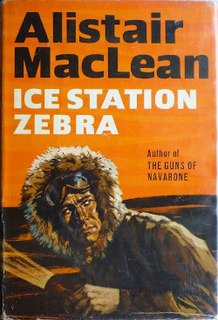 W
WIce Station Zebra is a 1963 thriller novel written by Scottish author Alistair MacLean. It marked a return to MacLean's classic Arctic setting. After completing this novel, whose plot line parallels real-life events during the Cold War, MacLean retired from writing for three years. In 1968 it was loosely adapted into a film of the same name.
 W
WIcebreaker, first published in 1983, was the third novel by John Gardner featuring Ian Fleming's secret agent, James Bond. Carrying the Glidrose Publications copyright, it was first published in the United Kingdom by Jonathan Cape and is the first Bond novel to be published in the United States by Putnam, beginning a long-standing association. Part of the book takes place in Northern Europe, including Finland; to make his book as authentic as possible, Gardner even visited Finland.
 W
WJames Bond, The Spy Who Loved Me is the official novelization of the 1977 Eon James Bond film The Spy Who Loved Me, which was itself inspired by the 1962 novel of the same title by Ian Fleming.
 W
WThe Janus Man is a 1987 thriller novel by British novelist Raymond Harold Sawkins, written under the pseudonym of Colin Forbes. The book is set in the period it was written, and concerns Soviet infiltration into the Secret Intelligence Service during the Cold War. The book is the fourth of twenty-four books written by Sawkins under Colin Forbes in the "Tweed and Co." series. Forbes published one edition of the "Tweed and Co." series each year from 1982 until his death in 2006.
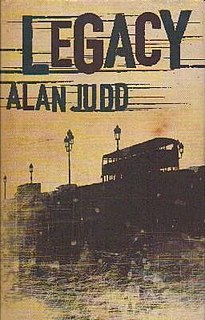 W
WSet in 1970s London, Legacy is a spy novel by English author Alan Judd. Published in 2001 it continues the story of Charles Thoroughgood, first introduced in his debut novel, A Breed of Heroes, published 20 years earlier. British historian Peter Hennessy described it as 'one of the best spy novels ever'.
 W
WThe Looking Glass War is a 1965 spy novel by John le Carré. Written in response to the positive public reaction to his previous novel, The Spy Who Came in from the Cold, the book explores the unglamorous nature of espionage and the danger of nostalgia. The book tells the story of an incompetent British intelligence agency known as The Department and its multiple botched attempts to verify a Communist defector's story of a Soviet missile buildup in East Germany. Some editions hyphenate "Looking Glass".
 W
WThe Man from Barbarossa, first published in 1991, was the eleventh novel by John Gardner featuring Ian Fleming's secret agent, James Bond. Carrying the Glidrose Publications copyright, it was first published in the United Kingdom by Hodder & Stoughton and in the United States by Putnam.
 W
WThe Man with the Golden Gun is the twelfth and final novel in Ian Fleming's James Bond series and thirteenth Bond book overall. It was first published by Jonathan Cape in the UK on 1 April 1965, eight months after the author's death. The novel was not as detailed or polished as the others in the series, leading to poor but polite reviews. Despite that, the book was a best-seller.
 W
WThe Marlows and the Traitor is the second in the series of novels about the Marlow family by Antonia Forest, first published in 1953. The story is set during the Easter holidays in a small fishing village on the South Coast. It is the first in the series to feature sailing and the first to have a major male character. In fact there are two significant male characters, Peter Marlow and the traitor. This story, more than most in the series, focuses on the younger members of the family. In the introduction to the Girls Gone By edition of The Marlows and the Traitor, Forest admits she never intended to write a series of books about the Marlows. At the time of writing the Nuremberg Trials were happening and Forest decided to write a book about a traitor. Only then did it occur to her to use the Marlows in the book.
 W
WThe Miernik Dossier, published by the Saturday Review Press in 1973, was the first of seven novels by the American novelist Charles McCarry featuring an American intelligence agent named Paul Christopher. Set in 1959 in Europe and Africa during the days of the Cold War, it is narrated in the form of reports, overheard conversations, and various documents from a multitude of sources of different nationalities, supposedly giving the reader an authentic picture of what an actual intelligence operation might be like. McCarry had previously been an undercover operative for the Central Intelligence Agency for nine years, and the book was hailed for its apparent authenticity and realistic depiction of tradecraft. It received excellent reviews, and instantly established McCarry's reputation as one of the foremost American novelists of espionage. Later books by McCarry, nine more in all, expanded from focusing solely on Christopher into what might be considered a chronicle of the Christopher universe: two novels feature his cousins, the Hubbards, and in many of the other Christopher novels his father, mother, one-time wife, and daughter play important and recurring roles. Also in this universe is a 1988 historical novel, The Bride of the Wilderness, about Christopher's ancestors in 17th-century England, France, and Massachusetts. Like all of McCarry's books, this one displays "an almost Jamesian awareness of [its] European locale, the special authenticity of a loving expatriate writing of an adopted foreign land."
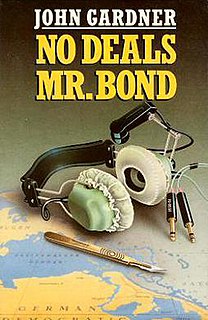 W
WNo Deals, Mr. Bond, first published in 1987, was the sixth novel by John Gardner featuring Ian Fleming's secret agent, James Bond. Carrying the Glidrose Publications copyright, it was first published in the United Kingdom by Jonathan Cape and in the United States by Putnam. It was the last Bond novel to be published in Britain by Jonathan Cape, ending an association dating back to the first Bond novel, Casino Royale in 1953.
 W
WOne Lonely Night (1951) is Mickey Spillane's fourth novel featuring private investigator Mike Hammer.
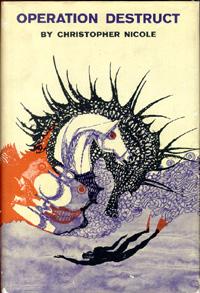 W
WOperation Destruct is a 1969 spy novel by Christopher Nicole written in the context of the Cold War and contests in international espionage between the West and the Soviet Union.
 W
WPassenger to Frankfurt: An Extravaganza is a spy novel by Agatha Christie first published in the United Kingdom by the Collins Crime Club in September 1970 and in the United States by Dodd, Mead and Company later in the same year. The UK edition retailed at twenty-five shillings. In preparation for decimalisation on 15 February 1971, it was concurrently priced on the dustjacket at £1.25. The US edition retailed at $5.95.
 W
WSmiley's People is a spy novel by John le Carré, published in 1979. Featuring British master-spy George Smiley, it is the third and final novel of the "Karla Trilogy", following Tinker Tailor Soldier Spy and The Honourable Schoolboy. George Smiley is called out of retirement to investigate the death of one of his old agents: a former Soviet general, the head of an Estonian émigré organisation based in London. Smiley learns the general had discovered information that will lead to a final confrontation with Smiley's nemesis, the Soviet spymaster Karla.
 W
WSole Agent is a spy novel by Kenneth Benton set in Lisbon during the Cold War in the 1970s.
 W
WThe Spy Who Came in from the Cold is a 1963 Cold War spy novel by the British author John le Carré. It depicts Alec Leamas, a British agent, being sent to East Germany as a faux defector to sow disinformation about a powerful East German intelligence officer. It serves as a sequel to le Carré's previous novels Call for the Dead and A Murder of Quality, which also featured the fictitious British intelligence organization, "The Circus", and its agents George Smiley and Peter Guillam.
 W
WTinker Tailor Soldier Spy is a 1974 spy novel by British author John le Carré. It follows the endeavours of taciturn, aging spymaster George Smiley to uncover a Soviet mole in the British Secret Intelligence Service. The novel has received critical acclaim for its complex social commentary—and, at the time, relevance, following the defection of Kim Philby. The novel has been adapted into both a television series and a film, and remains a staple of the spy fiction genre.
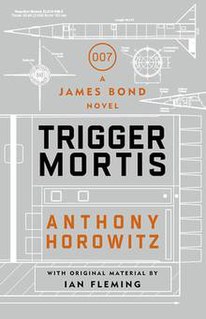 W
WTrigger Mortis is a 2015 James Bond novel written by Anthony Horowitz, and commissioned by the estate of Bond's creator Ian Fleming, which was published on 8 September 2015.
 W
WThe Weapon of Night is the nineteenth novel in the long-running Nick Carter-Killmaster series of spy novels. Carter is a US secret agent, code-named N-3, with the rank of Killmaster. He works for AXE – a secret arm of the US intelligence services.